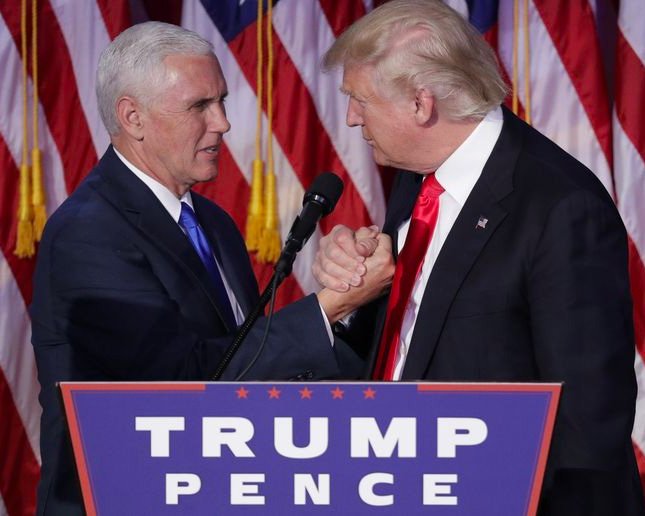
Erika Ayers Badan: Women in the Workplace Wake-Up Call
This headline somehow feels both shocking and completely unsurprising. The McKinsey and Lean In Women in the Workplace study is out, and the takeaway is…
Thought Leader: Erika Ayers Badan

About the author: WWSG exclusive speaker David Frum is a staff writer at The Atlantic and the author of Trumpocalypse: Restoring American Democracy (2020). In 2001 and 2002, he was a speechwriter for President George W. Bush.
In Germany and here in the United States, politicians who want to be seen as environmentalists are increasing greenhouse-gas emissions by forcing the premature closing of serviceable nuclear-power plants.
You might think of Germany as a global environmental leader. But if you look at actual practices, you’ll see a different story. Germany burns a lot of coal, ranking ninth in world coal consumption in 2020.
That other industrial pioneer, Britain, burns almost no coal. In May 2019, mainland Britain went a week without burning any coal at all. The difference between Britain and Germany—and between Germany’s own rhetoric and its record—can be traced to one fateful decision by outgoing Chancellor Angela Merkel: her decision in 2011 to phase out Germany’s nuclear plants.
A decade ago, Germany operated 17 nuclear reactors. They produced nearly one-quarter of the country’s electricity. Carbon-free electricity from nuclear power enabled unified Germany to retire the ultra-dirty power plants of the former East Germany without disruption to consumers. Throughout her first six years as chancellor, Merkel had championed Germany’s nuclear industry, dismissing objections as “absurd.” According to Merkel’s allies, she was jolted out of that view by the wreck of the nuclear-power plant in Fukushima prefecture in Japan. In March 2011, an earthquake and tsunami triggered the worst radiation release since the Chernobyl accident in 1986. More than 150,000 Japanese people had to be evacuated from their homes. The New York Times explained the context at the time: “Unlike other world leaders, she is a trained scientist, with a Ph.D. in physics. She reached the momentous decision to phase out nuclear power by 2022 after discussing it one night over red wine with her husband, Joachim Sauer, a physicist and university professor, at their apartment in central Berlin.”
You don’t want to say that any of that is untrue. But it’s also not the whole truth. Merkel had a pretty easy time in her first few years as chancellor. Her predecessor, Gerhard Schröder, had cracked the hardest problem left behind by German unification: persistently high unemployment. He drove through tough reforms to streamline Germany’s labor-market rules and social-welfare benefits. The reforms were not immediately popular. Schröder lost the chancellorship in the election of 2005. But as the Schröder reforms went into effect, Germans went back to work. The unemployment rate dropped from more than 11 percent in 2005 to less than 6 percent in 2011, despite the shock of the global financial crisis.
Merkel coasted on Schröder’s work through those early years, with approval ratings in the 70s. But then her luck ran out. The 2008–09 financial crisis touched Germany comparatively lightly, but it hit Germany’s European trading partners hard. In 2010 and 2011, the countries of Southern Europe plunged into debt crises that forced a tough choice on Germany: rescue them, or risk seeing the euro currency zone dissolve. Under that pressure, Merkel’s popularity sagged. Her disapproval numbers reached their peak of 43 percent in mid-2010. This was the political context at the time of Fukushima. And you can see why it forced a deep rethink on a profoundly risk-averse, formerly pro-nuclear chancellor.
Germany has long been home to an active, mobilized movement against nuclear energy, much more so than other nuclear-using democracies. You can spend a lively evening with German friends discussing the sources of this movement’s strength. Whatever the origin, however, the antinuclear movement offered a considerable political resource to a politician willing to use it. Many politicians had pondered this opportunity in the past, including Merkel’s immediate predecessors. Merkel grasped it.
In the days after the Fukushima accident, she announced that Germany would immediately close its eight oldest nuclear plants. In May, she decided to phase out the more modern nine by 2022. Three of those nine have already been closed, with the remaining six to follow by the end of next year. Nuclear’s contribution to Germany’s electricity output has been cut from the former nearly 25 percent to 11.3 percent, and soon will be zero.
Merkel pledged that the gap would be filled by renewables. That promise has not been kept. Germany’s top power source in 2021 has been coal, which provided 27 percent of the country’s electricity. Wind ranks only second.
Germany is also burning more natural gas—about 40 percent of it imported from Russia. That dependence will rise in the years ahead. Germany is working with Russia to complete a second under-the-Baltic pipeline with the reluctant acquiescence of the Biden administration. Much of Germany’s hesitance to support Ukrainian democracy against Russian aggression can be traced to Merkel’s choice against nuclear power in 2011.
In the decade since Fukushima, Germany has reduced its greenhouse-gas emissions. According to official German figures, the country emitted about 917 million metric tons of carbon-dioxide equivalents in 2011. In 2019, it emitted about 810 million metric tons, an 11.7 percent reduction. That’s a better record than that of the United States, but it pales before nuclear-using Britain, which cut its emissions over the same period by more than 21 percent, a number that suggests what Germany might have accomplished had Merkel chosen a different course.
This is a lesson Americans should consider too. The state of California, once a nuclear leader, has decommissioned three of its four nuclear plants, and is planning to close its last in the middle of this decade. Those plants have fallen victim to the same post-Fukushima anxiety that ended Germany’s nuclear era. Their closures portend equally grave consequences for California’s postcarbon future. The still-operating Diablo Canyon plant alone produces about 9 percent of California’s electricity. If Diablo Canyon goes offline in 2024 or 2025, filling that gap will almost certainly require burning more gas. Gas already provides 37 percent of California’s electricity; solar and wind together provide only about 24 percent. In the near term, less nuclear means more gas.
All energy choices entail trade-offs. Wind interferes with migratory birds and despoils open vistas. Solar panels are manufactured by coerced labor. Fabricating the panels—and disposing of them—can exude hazardous materials into the environment. Nuclear energy, too, has costs and hazards: radiation risks in the present; the disposal of spent fuel that must be safeguarded for centuries to come. But no other technology can so massively and so rapidly substitute for carbon-emitting electrical generation. No government that really regarded climate change as its top energy priority would close nuclear plants before the end of their useful lives.
The world is warming because political systems find it hard to act today against the problems of tomorrow. Balancing present fears against future dangers is difficult. Nuclear seems scary. Climate change seems remote. And so in Germany and in California, politicians protect themselves in the here and now with choices whose costs will be paid decades later.
In American eyes, Merkel’s reputation has benefited from the comparison with Donald Trump, who singled her out as the democratic leader he disliked most. American journalists even touted her as the true leader of the free world, to jab at an American president who had abdicated that role. There is much to appreciate about her reticent style of leadership. But history may judge that, on one of the most consequential issues of her chancellorship, Merkel not only led from behind; she led in the wrong direction. And unfortunately for the world, Americans seem determined to follow Merkel’s path.
Erika Ayers Badan: Women in the Workplace Wake-Up Call
This headline somehow feels both shocking and completely unsurprising. The McKinsey and Lean In Women in the Workplace study is out, and the takeaway is…
Thought Leader: Erika Ayers Badan
Dr. Sanjay Gupta: Why Haven’t We Cured the Common Cold?
The average person gets two to four colds a year. With all the missed school and work, that adds up to an economic impact of…
Thought Leader: Sanjay Gupta
Niall Ferguson on the Logic Behind America’s New Worldview
Niall Ferguson argues that the media reaction to President Trump’s new National Security Strategy (NSS) says more about elite assumptions than about the document itself.…
Thought Leader: Niall Ferguson

